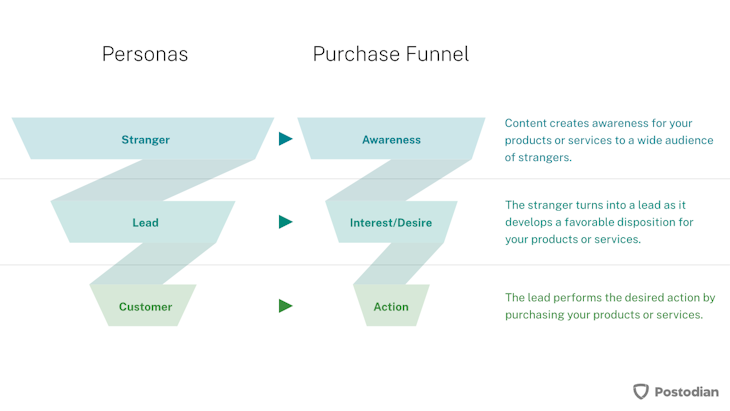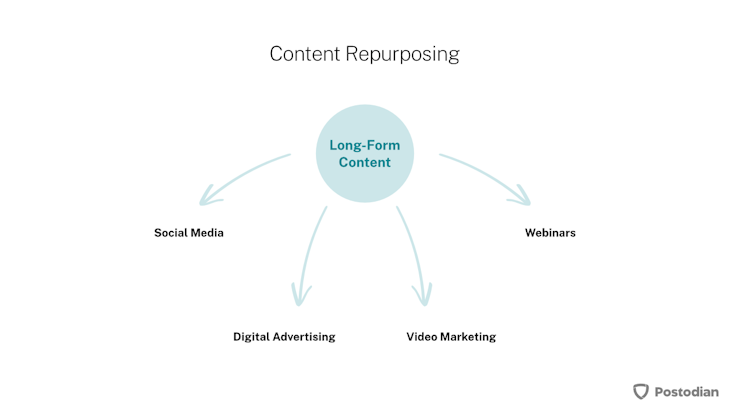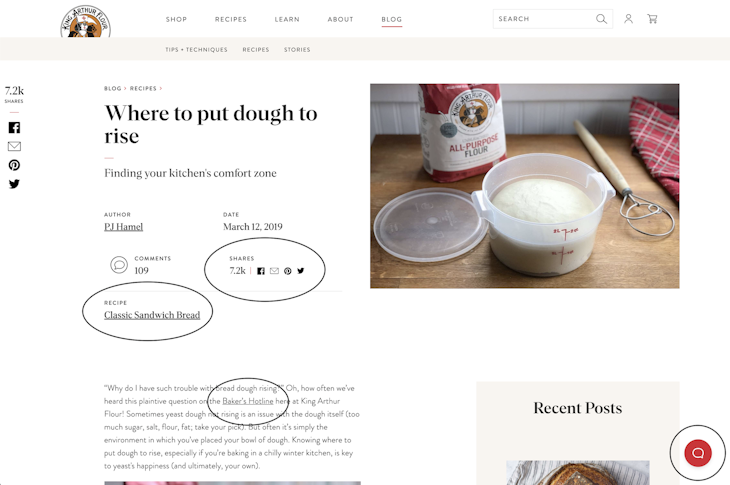Guide to Inbound Marketing For Beginners
Inbound marketing is a systematic method to pull customers to your website using strategic online content creation. The content provides solutions to answers which customers are looking for and naturally attracts them to stay longer on your website.
Published April 29, 2020
-
Grace Teo
What is inbound marketing?
Inbound marketing is one of the most popular marketing methodologies explored by companies to attract potential customers to their website where products and services are sold using strategically crafted content.
The objective is to promote the company’s service or product within or around the published content. This is often done through various online mediums such as social media, search engines or even emails.
In simple terms, content pieces are like signboards to a lost driver. They are provided with needed information and are not thrown at with salesy information, making the whole engagement authentic. The intention is to guide a potential customer through an inbound marketing funnel.
Elements of an inbound marketing funnel
While there are many different types of inbound marketing funnels out there, you will notice that the funnels depict the traditional purchase funnel or also known as the AIDA Model. It stands for
- Awareness
- Interest
- Desire
- Action
The consumer-focused model was developed in 1898 by advertising advocate, Elias Lewis. The whole process is meant to naturally convert strangers into leads and further into customers.
This is what inbound marketing or other funnels such as buyer’s journey or marketing journey want to achieve. It’s safe to say that the elements are the same as those in the purchase funnel.

An effective purchase funnel makes as many strangers aware of your products or services as possible through your expertise.
When someone is looking for a solution and you are at the right place to assist, it’s easy to have someone consider your offering. But first, you’ve got to amaze them. At the end of the funnel, only a fraction will become customers.
Advantages
Inbound marketing shouldn’t be ignored. Traditional companies tend to concentrate on outbound marketing which is generally more expensive and much less effective. The conversion rate is bad. When is the last time you remember being pitched at and following through with a purchase?
Advertisements, cold calls, or unsolicited emails reach more people but at the same time, these people are cold audiences. They haven’t interacted with your company out of their initiative and do not need the solution you are promoting. Nothing is better than serving people food exactly at the point and time where and when they are hungry.
Inbound marketing is the reason why your company needs to be blogging right now. A blog solidifies your image as the subject matter expert.
Just like in real life, it’s easier to make a connection when the other party is open to listening or already looking for a solution.
We want to achieve building a brand that can be trusted. Don’t be aggressive with your marketing technique. People can smell a sales pitch from miles away. You can turn complete strangers into brand evangelists by being truthful and useful.
How to begin
The time to start thinking about your inbound marketing strategy is now. It doesn’t matter how many website visitors or followers you have at this point. You’ll want to build a collection of useful content related to your products and services by the time you’re found.
Search engines like Google need months to rank web pages. It can take from three months to a year, depending on several factors such as keyword competition, website traffic, and popularity of the website on other social media platforms.
You’ll want to be out there as soon as possible and start the learning process of what kind of content works best for your audience. And if you’re already attracting website visitors, a well-designed purchase funnel will lead to increased sales.
Think of creating content that has a clear purpose and that is there to service your (future) customer. Begin by listing a set of problems that motivated you to build your product or service in the first place. Create content around the problems your business is trying to solve.
You must understand the persona of your potential customer well enough. You’ll want to attract customers of your kind.
It’s easier to start with long-form written content before turning it into illustrative, video, or audio content.
Why long-form content first
Long-form content allows you to target specific keywords for a certain topic. It should provide the reader will all the information it’s looking for. This is not ideal in a visual format because visual content should be short and catchy. That’s why it is best to be as detailed as possible in your written content.
Long-form content can be repurposed into smaller snippets and spun off to different formats.
Don’t leave out information that contributes to a solution (unless it’s intellectual property, of course) because search engines will rank more useful content higher. How they rank results exactly is their secret, but we know for sure that useful content will eventually emerge to the top.

Using an editor with a sleek and clean interface like Postodian helps you concentrate on your writing without distraction.
All content you write on Postodian comes in a readymade structure to help you with basic search engine optimization (SEO) rules so you can get found easily.
Just remember to always add a call-to-action such as a link or a button in each content. This ensures that you never leave your interested reader hanging and lets them learn more about your product or service. These are strategies that you can immediately implement with ease.
Best practices
Although we recommend investing time in long-written content first, the following best practices are just as important when repurposing content to other formats.
- Be laser-focused with your message: Each content created should solve one specific problem. Trying to provide too much information especially if it’s not related to the topic can be overwhelming, driving potential readers away.
- Create easily understandable content: When your message is unorganized, readers will find it difficult to grasp what you’re trying to say. Use short paragraphs, accurate headlines, and lists or graphics to help communicate your idea. Avoid clutter both in writing and in design.
- Practice lead nurturing: Once you’ve managed to secure contact or the attention of possible customers, continue building rapport. Provide them with a link to your product or service which helps them solve their problem. Also make it easy for them to get in touch with your company through a live chat, social media accounts, or a contact form. A newsletter subscription is also effective for potential customers who may not be ready to purchase right now, but want to get notified about updates down the road. Leads need to be engaged promptly or the interest will fade as time passes.
- Analyze data and metrics: Find out which content works best for you by using analytics tools such as Google Analytics. Social media platforms will have their analytics tool as well. Once you know what works well, you may want to produce similar content to attract more views.
Inbound marketing tools
There are tons of tools out there that you can use to support your inbound marketing strategy. As a beginner, you need nothing more than these tools to kickstart your content creation for inbound marketing:
- Google Docs & Google Sheets: Idea listing, research documentation
- Postodian: Cloud-hosted writing platform with a structured workflow
- Canva: Design graphics to create new content or to add within your content
- Pixabay, Unsplash, Pexels: Royalty-free stock photos
Simple inbound marketing example
After all the information, we have to show how it’s done in real. King Arthur Flour does amazing work with its inbound marketing.
They publish a blog on their website that provides tons of information for bakers. In this particular long-form article, they only wanted to solve one problem: Where to place the dough for it to rise, a problem for many breadmakers.

Within the article, you can find photos with King Arthur flour in it, links to other content such as the classic sandwich bread recipe.
The website simplifies your search for a solution, obtaining further help through comments or a live chat, and sharing the content using social media buttons. The live chat is that red button located on the bottom right of the website. People love this form of instant communication and may even expect to find it nowadays.
In case you noticed: the article was written on March 12, 2019. When we take a look at their social media account, the content was repurposed and turned into an Instagram post on April 25, 2020.

As we can see, the caption uses a snippet of the long-form content. There is also a call-to-action that encourages viewers of the post to visit their website to get more tips and tricks. Content repurposing is repeated and adapted to other social media platforms.
Conclusion
Inbound marketing is not that scary and difficult to start with. As a beginner, you want to keep things simple but useful. Use the recommendations above to start with your strategy and begin improving sales.
